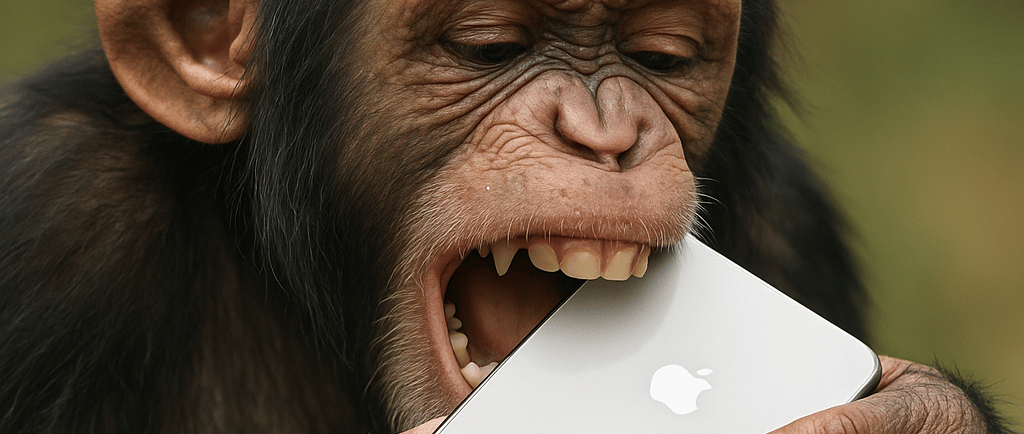ARTIFICIAL INTELLIGENCE: A SMARTPHONE IN THE HANDS OF A CHIMPANZEE
What would be the effect of placing a highly advanced tool, like a smartphone, in the hands of an animal such as a chimpanzee? Absolutely none. It would be useless. After all, more important than the technology itself is the ability of the one operating it. With artificial intelligence, we’re witnessing a similar situation. Many business owners have been using the tool’s creative potential to generate funny memes and other types of content, thinking they’re doing marketing. When, in reality, it’s nothing more than shallow digital pamphleteering — a cheap (and ineffective) way to communicate in an already saturated market.
Felipe Vasconcelos | Marketing Manager
6/28/20252 min read


One of the most powerful tools in our daily lives is the smartphone. With it, we access the internet, connect with people from anywhere in the world, work, study, and entertain ourselves. But what would be the use of a state-of-the-art smartphone in the hands of a chimpanzee? Absolutely none — it would most likely try to chew on the device.
In the same way, no matter how advanced it may be, artificial intelligence completely loses its potential when placed in the wrong hands. Without proper preparation, a powerful tool not only becomes ineffective — it can even become harmful.
According to a report by the Brazilian newspaper Gazeta do Povo, the average IQ (intelligence quotient) of the Brazilian population is between 83 and 87. This means there are individuals with scores below that already low range — especially when compared to countries like Japan, where the average IQ is around 106.
Given this — and considering that artificial intelligence is an emerging and revolutionary technology often likened to the Industrial Revolution — it’s essential to understand that its true value depends directly on human capacity to comprehend and apply it strategically. No matter how promising an innovation is, it has little real use in the hands of someone who isn’t at least minimally prepared to operate it.
In the context of digital marketing, for example, many entrepreneurs are turning to AI to generate shallow content — such as memes or humorous videos — under the impression that this alone constitutes a marketing strategy. In reality, this approach reflects a limited and reductionist view of the true role of technology in brand positioning.
AI, no matter how advanced, does not replace a marketing professional — just as it doesn’t replace a doctor or a lawyer. It makes mistakes, has limitations, and lacks strategic sensitivity and business vision. Its role is not to eliminate the human factor but to amplify it, using data and automation as leverage.
Let’s be clear: the goal here is not to demonize technology. Quite the opposite — in digital marketing, AI is not only welcome but essential. Tools focused on data analytics and business intelligence are now indispensable. The truth is, without technology, there is no digital marketing. But it must be used with discernment, technical skill, and a clear purpose.
Moreover, it’s important to remember that AI-generated responses still lack creativity and are often biased. At least for now, they are far from reaching the complexity and depth of human reasoning. Even a person with an IQ of 83 is — and will continue to be — superior to any artificial intelligence currently available.
Artificial intelligence is exactly that: a tool. Powerful, yes — but still dependent on human intelligence to be well applied. When in the right hands, it accelerates processes, reveals invisible patterns, and enhances strategies. But when misunderstood or used carelessly, it becomes just another passing trend disguised as innovation.
The problem has never been the technology — it’s the mindset of those who use it.
In the end, the real competitive edge remains the ability to think, to question, and to create with purpose. AI may be part of the game — but you are still the one who sets the rules.